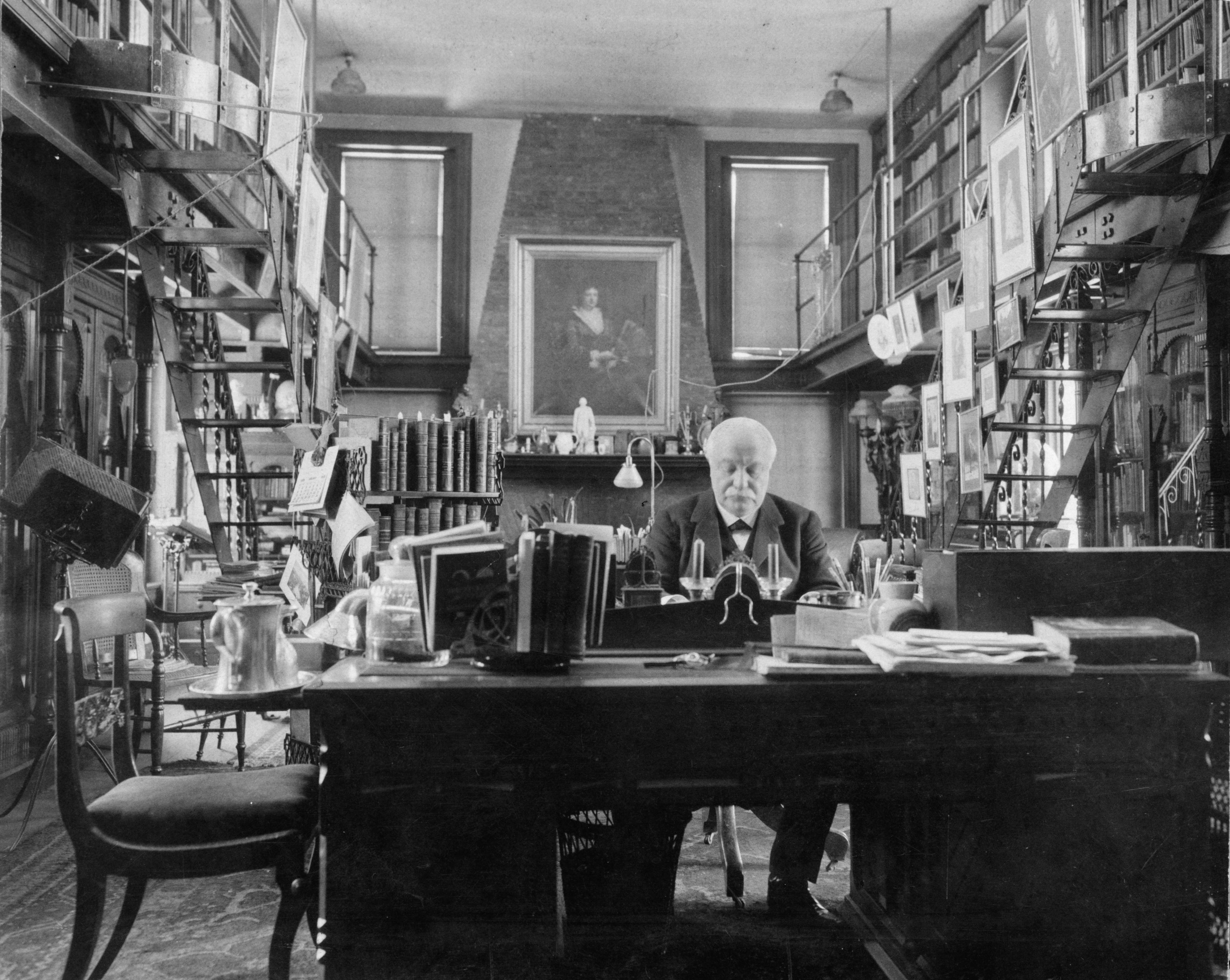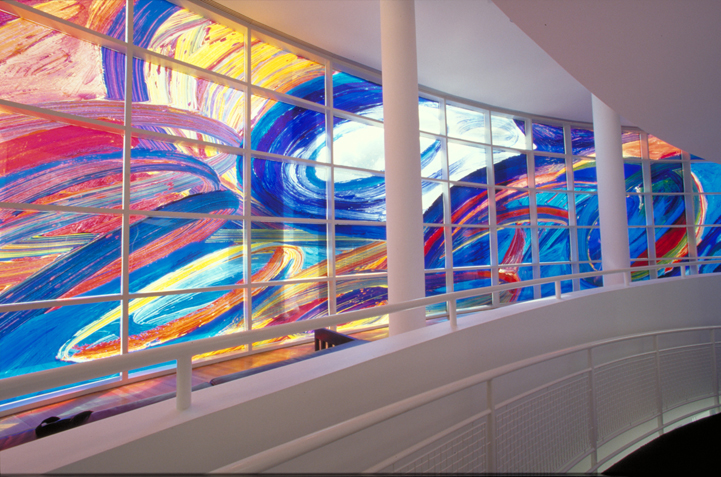|
Daniel Pabst
Daniel Pabst (June 11, 1826 – July 15, 1910) was a German-born American Victorian decorative arts#Furniture, cabinetmaker of the Victorian Era. He is credited with some of the most extraordinary custom interiors and hand-crafted furniture in the United States. Sometimes working in collaboration with architect Frank Furness (1839–1912), he made pieces in the Renaissance Revival, Neo-Grec, Modern Gothic, and Colonial Revival styles. Examples of his work are in the collections of the Metropolitan Museum of Art, the Philadelphia Museum of Art, the Art Institute of Chicago, and the Victoria and Albert Museum in London. Background Born in Kirchhain#Town_divisions, Langenstein, Hesse, Germany, Pabst immigrated to the U.S. in 1849 and settled in Philadelphia, Pennsylvania, where he would make his professional career. The excellence of his craftsmanship elevated him above his peers, as did the strongly architectonic (building-like) quality of his furniture designs—often massively s ... [...More Info...] [...Related Items...] OR: [Wikipedia] [Google] [Baidu] |
Frank Furness
Frank Heyling Furness (November 12, 1839 - June 27, 1912) was an American architect of the Victorian era. He designed more than 600 buildings, most in the Philadelphia area, and is remembered for his diverse, muscular, often unordinarily scaled buildings, and for his influence on the Chicago architect Louis Sullivan. Furness also received a Medal of Honor for bravery during the American Civil War, Civil War. Toward the end of his life, his bold style fell out of fashion, and many of his significant works were demolished in the 20th century. Among his most important surviving buildings are the University of Pennsylvania Library (now the Fisher Fine Arts Library), the Pennsylvania Academy of the Fine Arts, and the First Unitarian Church of Philadelphia, all in Philadelphia, Pennsylvania, and the Baldwin School Residence Hall in Bryn Mawr, Pennsylvania, Bryn Mawr. Biography Furness was born in Philadelphia on November 12, 1839. His father, William Henry Furness, was a prominent Un ... [...More Info...] [...Related Items...] OR: [Wikipedia] [Google] [Baidu] |
Wood Veneer
In woodworking, veneer refers to thin slices of wood and sometimes bark, usually thinner than 3 mm (1/8 inch), that typically are glued onto core panels (typically, wood, particle board or medium-density fiberboard) to produce flat panels such as doors, tops and panels for cabinets, parquet floors and parts of furniture. They are also used in marquetry. Plywood consists of three or more layers of veneer. Normally, each is glued with its grain at right angles to adjacent layers for strength. Veneer beading is a thin layer of decorative edging placed around objects, such as jewelry boxes. Veneer is also used to replace decorative papers in Wood Veneer HPL. Background Veneer is obtained either by "peeling" the trunk of a tree or by slicing large rectangular blocks of wood known as flitches. The appearance of the grain and figure in wood comes from slicing through the growth rings of a tree and depends upon the angle at which the wood is sliced. There are three main types ... [...More Info...] [...Related Items...] OR: [Wikipedia] [Google] [Baidu] |
High Museum Of Art
The High Museum of Art (colloquially the High) is the largest museum for visual art in the Southeastern United States. Located in Atlanta, Georgia (on Peachtree Street in Midtown, the city's arts district), the High is 312,000 square feet (28,985 m2) and a division of the Woodruff Arts Center. The High organizes and presents exhibitions of international and national significance alongside its comprehensive collection of more than 18,000 works of art, and is especially known for its 19th- and 20th-century American decorative arts, folk and self-taught art, modern and contemporary art, and photography. A cultural nexus of Atlanta since 1905, it hosts festivals, live performances, public conversations, independent art films, and educational programs year-round. It also features dedicated spaces for children of all ages and their caregivers, an on-site restaurant, and a museum store. In 2010, it had 509,000 visitors, 95th among world art museums. History The museum was found ... [...More Info...] [...Related Items...] OR: [Wikipedia] [Google] [Baidu] |
Theodore Roosevelt, Sr
Theodore may refer to: Places * Theodore, Alabama, United States * Theodore, Australian Capital Territory * Theodore, Queensland, a town in the Shire of Banana, Australia * Theodore, Saskatchewan, Canada * Theodore Reservoir, a lake in Saskatchewan People * Theodore (given name), includes the etymology of the given name and a list of people * Theodore (surname), a list of people Fictional characters * Theodore "T-Bag" Bagwell, on the television series ''Prison Break'' * Theodore Huxtable, on the television series ''The Cosby Show'' Other uses * Theodore (horse), a British Thoroughbred racehorse * Theodore Racing, a Formula One racing team See also * Principality of Theodoro, a principality in the south-west Crimea from the 13th to 15th centuries * Thoros (other), Armenian for Theodore * James Bass Mullinger James Bass Mullinger (1834 or 1843 – 22 November 1917), sometimes known by his pen name Theodorus, was a British author, historian, lecturer and scholar. A l ... [...More Info...] [...Related Items...] OR: [Wikipedia] [Google] [Baidu] |
Detroit Institute Of Arts
The Detroit Institute of Arts (DIA), located in Midtown Detroit, Michigan, has one of the list of largest art museums, largest and most significant art collections in the United States. With over 100 galleries, it covers with a major renovation and expansion project completed in 2007 that added . The DIA collection is regarded as among the top six museums in the United States with an Museum#Encyclopedic, encyclopedic collection which spans the globe from ancient Egyptian and European works to contemporary art. Its art collection is valued in billions of dollars, up to $8.1 billion USD according to a 2014 appraisal. The DIA campus is located in Detroit's Cultural Center Historic District (Detroit), Cultural Center Historic District, about north of the Downtown Detroit, downtown area, across from the Detroit Public Library near Wayne State University. The museum building is highly regarded by architects. The original building, designed by Paul Philippe Cret, is flanked by north and ... [...More Info...] [...Related Items...] OR: [Wikipedia] [Google] [Baidu] |
Greek Revival Architecture
The Greek Revival was an architectural movement which began in the middle of the 18th century but which particularly flourished in the late 18th and early 19th centuries, predominantly in northern Europe and the United States and Canada, but also in Greece itself following independence in 1832. It revived many aspects of the forms and styles of ancient Greek architecture, in particular the Greek temple, with varying degrees of thoroughness and consistency. A product of Hellenism, it may be looked upon as the last phase in the development of Neoclassical architecture, which had for long mainly drawn from Roman architecture. The term was first used by Charles Robert Cockerell in a lecture he gave as Professor of Architecture to the Royal Academy of Arts, London in 1842. With a newfound access to Greece and Turkey, or initially to the books produced by the few who had visited the sites, archaeologist-architects of the period studied the Doric and Ionic orders. Despite its univ ... [...More Info...] [...Related Items...] OR: [Wikipedia] [Google] [Baidu] |
Allentown Art Museum
The Allentown Art Museum of the Lehigh Valley is an art museum located in Allentown, Pennsylvania. It was founded in 1934 by a group organized by noted Pennsylvania impressionist painter, Walter Emerson Baum. With its collection of over 19,000 works of art, the Allentown Art Museum is a major regional art institution. In addition, its library and archives of more than 16,000 titles and 40 current periodicals make it an important regional cultural resource. Founding The Allentown Art Museum, founded originally as the Allentown Art Gallery and organized by Baum, opened in Allentown's Hunsicker School on March 17, 1934. With seventy canvases by local Pennsylvania impressionist artists on display, the gallery attracted major attention from the local and regional art communities. During the Great Depression, Baum was able to grow the collection through the Public Works of Art Project and through acquisitions and gifts. In June 1936, the City of Allentown granted the museum a perman ... [...More Info...] [...Related Items...] OR: [Wikipedia] [Google] [Baidu] |
Pennsylvania Academy Of The Fine Arts
The Pennsylvania Academy of the Fine Arts (PAFA) is a museum and private art school in Philadelphia, Pennsylvania."Pennsylvania Academy of the Fine Arts" Encyclopedia Britannica, Retrieved 28 July 2018. It was founded in 1805 and is the first and oldest art museum and art school in the United States. The academy's museum is internationally known for its collections of 19th- and 20th-century American paintings, sculptures, and works on paper. Its archives house important materials for the study of American art history, museums, and art training. It offers a Bachelor of Fine Arts, [...More Info...] [...Related Items...] OR: [Wikipedia] [Google] [Baidu] |
Museum Of Fine Arts Boston
The Museum of Fine Arts (often abbreviated as MFA Boston or MFA) is an art museum in Boston, Massachusetts. It is the 20th-largest art museum in the world, measured by public gallery area. It contains 8,161 paintings and more than 450,000 works of art, making it one of the most comprehensive collections in the Americas. With more than 1.2 million visitors a year, it is the 52nd–most visited art museum in the world . Founded in 1870 in Copley Square, the museum moved to its current Fenway location in 1909. It is affiliated with the School of the Museum of Fine Arts at Tufts. History 1870–1907 The Museum of Fine Arts was founded in 1870 and was initially located on the top floor of the Boston Athenaeum. Most of its initial collection came from the Athenæum's Art Gallery. Francis Davis Millet, a local artist, was instrumental in starting the art school affiliated with the museum, and in appointing Emil Otto Grundmann as its first director. In 1876, the museum moved to a h ... [...More Info...] [...Related Items...] OR: [Wikipedia] [Google] [Baidu] |
University Of Pennsylvania
The University of Pennsylvania (also known as Penn or UPenn) is a private research university in Philadelphia. It is the fourth-oldest institution of higher education in the United States and is ranked among the highest-regarded universities by numerous organizations and scholars. While the university dates its founding to 1740, it was created by Benjamin Franklin and other Philadelphia citizens in 1749. It is a member of the Ivy League. The university has four undergraduate schools as well as twelve graduate and professional schools. Schools enrolling undergraduates include the College of Arts and Sciences, the School of Engineering and Applied Science, the Wharton School, and the School of Nursing. Among its highly ranked graduate schools are its law school, whose first professor wrote the first draft of the United States Constitution, its medical school, the first in North America, and Wharton, the first collegiate business school. Penn's endowment is US$20.7 billio ... [...More Info...] [...Related Items...] OR: [Wikipedia] [Google] [Baidu] |
Horace Howard Furness
Horace Howard Furness (November 2, 1833 – August 13, 1912) was an American Shakespearean scholar of the 19th century. Life and career Horace Furness was the son of the Unitarian minister and abolitionist William Henry Furness (1802–1896), and brother of the architect Frank Furness (1839–1912). He graduated from Harvard University in 1854, embarked on a journey to Europe with Atherton Blight, and then studied in Germany. After returning to the United States, he was admitted to the Philadelphia Bar in 1858, but his growing deafness interfered with the practice of law. In 1860, he joined the Shakspere Society of Philadelphia, an amateur study group that took its scholarship seriously. As he later wrote: Every member had a copy of the Variorum of 1821, which we fondly believed had gathered under each play all Shakespearian lore worth preserving down to that date. What had been added since that year was scattered in many different editions, and in numberless volumes disperse ... [...More Info...] [...Related Items...] OR: [Wikipedia] [Google] [Baidu] |




.jpg)


